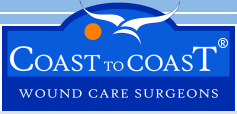 |
 |
|
 |
|
 |
 |
|
 |
AGING
AND FUTURE SHOCK
Older
Sooner - The U.S. population is rapidly growing larger, and with a
particularly sharp increase in the elderly and the "oldest old." In fact,
the future age structure of the population will soon be much older than
it is now.
Projections:
-
National
Population increase - 392 million by 2050. A 50% increase from 1990.
-
Older
Population increase - 65+ yrs., numbered 36 million in 2003 (12.3% of U.S.
population) or 1 in every 8 Americans.
-
Doubling
by 2030 - there'll be 71.5 million older persons (more than twice their
number in 2000).
-
Baby Boomers
- soon reaching retirement age - 65 yrs. in 2011.
-
Life Expectancy
- increasing to 86 yrs. for males; 92 for females (2050). Number of Elderly
- with poor health is projected to increase sharply from 1990 to 2030,
doubling or tripling of the number reported in 1990.
A Question
- For many scholars, health-care givers, as well as the public - the basic
question is: Will people live well during these added years of life or
will they be physically dependant on others because of serious health or
disabling conditions? First, what is the existing status and problems of
the elderly population to-day?
Here is the picture:
Retirement:
-
Retirement
systems are threatened.
-
Incomes
are smaller.
-
Health-care
options are declining.
-
Social
Security not sustainable.
-
Reform
plans not sustainable.
-
Policy
experiments not sustainable.
-
Polarizing
of ideas not workable.
Insurance
and Government:
-
Increasingly
frustrating demands of insurance groups and government agencies.
-
Federal
funding plummeting.
Health
Care:
-
Rising
operational costs, declining care.
-
Competitive
costs rising.
-
Understaffing.
-
Increasing
demands.
-
Pharmaceutical
increases.
-
Compromising
standards and policies.
-
Shrinking
options.
-
Increasing
litigations.
Long
Term Care Facilities - Much of the elderly U.S. population are living
appallingly compromised lives. Consequently, many have limited social,
financial, and housing resources. Others have grave difficulties of home
management of patients, with serious health or disabling conditions.
Many,
therefore, are being driven to overburdened long-term-care-facilities.
Alzheimer's disease patients, for one, in nursing home residences, are
most common and at the highest ages.
Nursing
Home Statistics:
-
Estimated
1.56 million elderly (65+) are living in nursing homes in U.S.
-
18,000
long-term-care-facilities and 1,813,665 beds are in the U.S.
-
4.7% aged
(65-84), to 18.2% aged (85+) are living in nursing homes.
-
43% of
those turning age (65) in 1990 will enter a nursing home at some time during
their lives.
-
52% of
all women and 33% of all men who are now (65) will spend their last years
in a long-term facility.
Unfortunately
- Many are too frail, too sick, too poor, and too powerless to chose or
even protest their care. From this, there will be large increases in the
number of vulnerable groups, such as the "oldest old."
Number
One Problem - These grim statistics puts a greater force on long-term-care-facilities
and the general quality of care, of which wounds are the number one problem,
with their complex healing process.
Live
Better - Live Longer - Coast to Coast Wound Care Surgeons are far beyond the ordinary
as they offer real, workable, health-care options never offered before.
But, not just to the outward aspects of aging and wound-care, but also
to the hidden problems affecting the resident-patients' quality of life
- to not only live better, but to live longer.
Exceptional
Service - Our skilled and dedicated surgeons offer an exceptional in-house,
wound-care service, conveniently, effectively, and compassionately at the
patient's bedside and familiar surrounding of the nursing care facility.
Aging | Chronic wounds | Bedsores
| Wound types | Pain | Diet and healing | Risk factors
|
 |
 |
 |
 |
|
Copyright © 2005
Coast to Coast Wound Care. All rights reserved.
|
|



